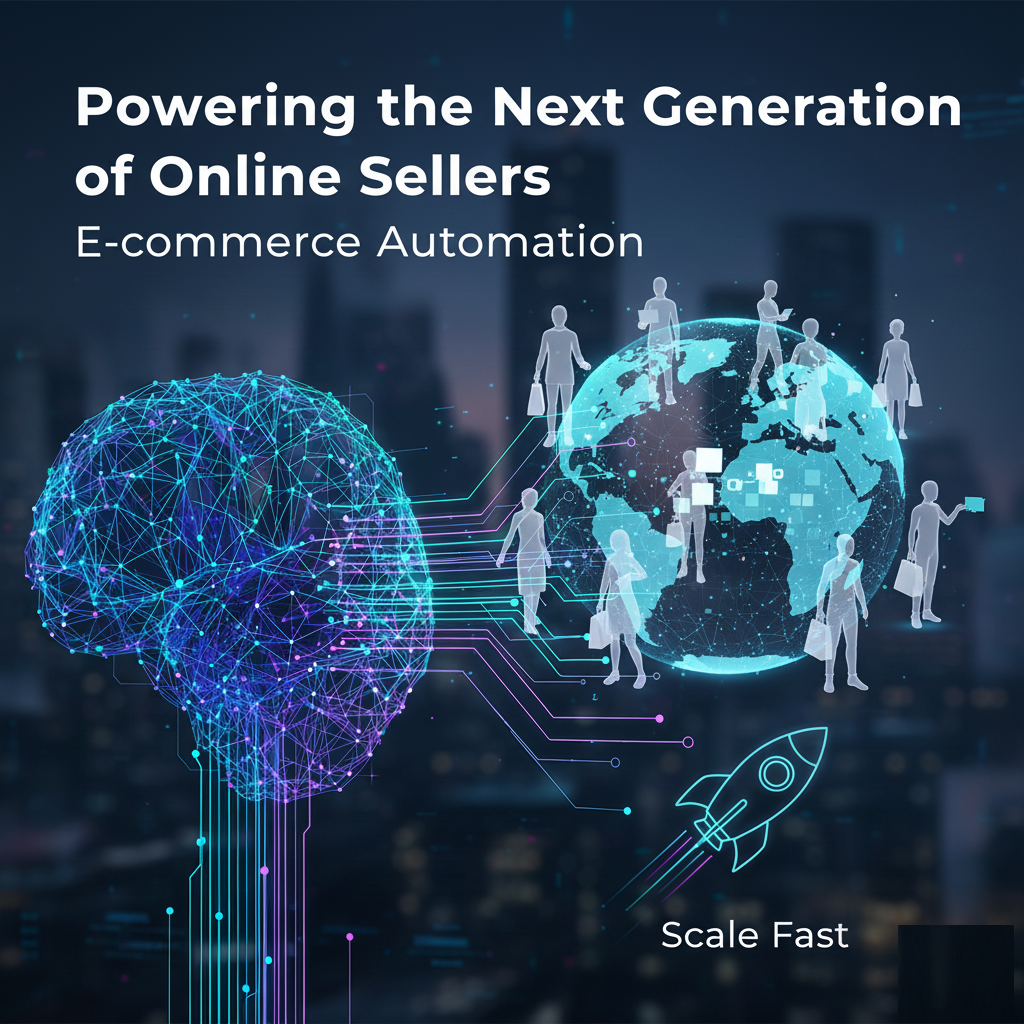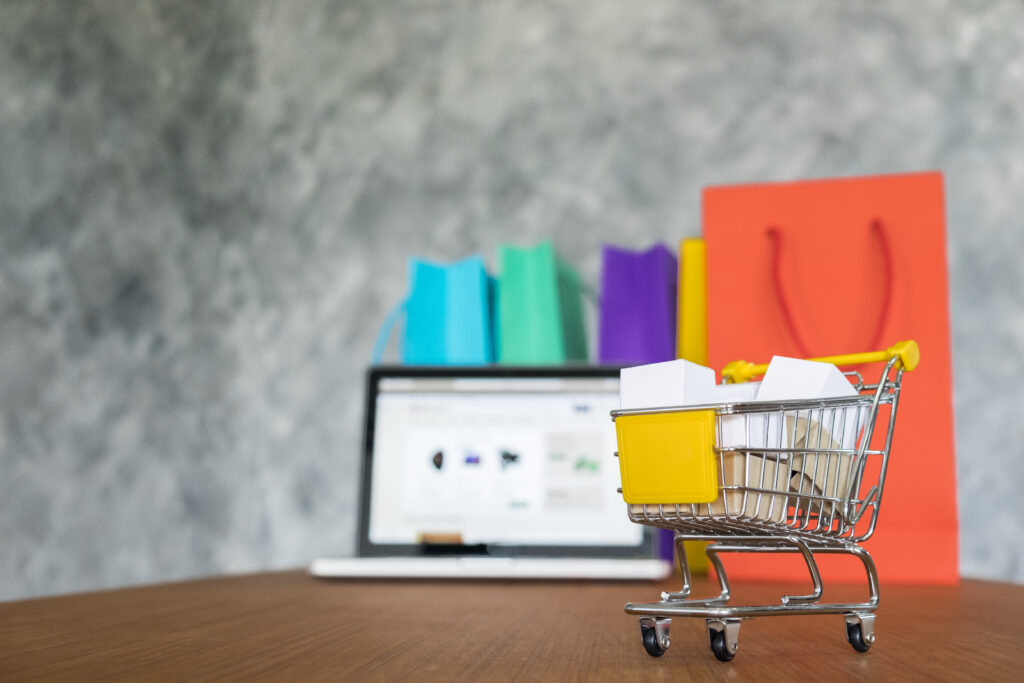Are you ready to join the next generation of online sellers? The digital marketplace is evolving at lightning speed, and understanding the future of commerce is key.
Gone are the days of simply listing a product and hoping for sales. Today’s landscape is a high-stakes arena of data, automation, and customer experience, driven by the latest online shopping trends.
If you’re still managing your store with manual processes, you’re not just working hard—you’re working against the tide.
This post is your roadmap to the future, examining critical 5 trends in ecommerce and revealing how strategic automation is the key to not just surviving, but absolutely thriving.
E-commerce Revolution: More Than Just a Storefront
Remember when having a website was enough? That era is over. E-commerce has transformed into a complex, dynamic ecosystem, a shift clearly documented in any analysis of recent trends in e commerce PDF reports.
It’s a 24/7 global operation where customer expectations are higher than ever. They want personalized recommendations, lightning-fast shipping, and seamless service. Meeting these demands manually is impossible.
This shift is creating a clear divide. On one side are overwhelmed sellers drowning in spreadsheets and customer emails.
On the other are agile entrepreneurs leveraging technology to scale their empires, positioning themselves for the future of e commerce in the next 5-10 years.
Which side do you want to be on? The future belongs to those who adapt. It’s not about working more hours; it’s about working smarter.
Your business should be a well-oiled machine, not a constant firefight. The key question is, how do you build that machine?
The answer lies in understanding the forces shaping the future of commerce and aligning your strategy with them.
E-Commerce in the Next 5-10 Years:
imagine an online store that knows your taste better than you do, or a delivery that arrives the same day in packaging that doesn’t harm the planet.
This isn’t a distant dream; it’s the core of what we can expect from e-commerce in the next 5-10 years. The future is about moving from transactional clicks to a truly relational and intuitive experience.
Here’s how your shopping journey is set to improve:
- A Personal Shopper for Everyone: AI will power a unique storefront for every visitor, showcasing products that fit your unique style and past purchases, making discovery a joy, not a chore.
- Brands with a Conscience: We will see a rise in brands that build loyalty not through discounts, but through authentic stories and a real commitment to social and environmental causes.
- Logistics You Can Feel Good About: The frustration of slow shipping will fade. The new standard will be rapid, transparent delivery that also prioritizes sustainability, from recycled materials to carbon-neutral shipping.
- The Rise of Voice and Visual Search: The search bar will become less central. You’ll be able to shop by simply describing what you want to a device or by using a photo to find a product online.
- Convenience on Autopilot: For household goods and curated boxes, the subscription model will eliminate the need to remember reorders, delivering convenience directly to your door.
These advancements all lead to one major improvement: a shopping experience that is effortlessly personalized, sustainable, and seamlessly integrated into your life.
Key Changes Made & Why:
- Shift in Framing: Changed from “Here are the trends” to “Here is how your experience will improve.”
- Benefit-Oriented Language: Replaced jargon like “Hyper-Personalization at Scale” with consumer benefits like “It Just Gets You” and “saving you time and hassle.”
- Focus on Pain Points: Directly addresses current frustrations like endless scrolling, slow shipping, impersonal service, and the guilt of non-sustainable packaging.
- Softer Business Terminology: Replaced “The Ascendancy of Authenticity” with “Trust Over Hype” and “Brands with a Conscience,” which are more relatable concepts.
- Simplified the Conclusion: The original’s final paragraph was very focused on the business’s backend needs. The new conclusions bring it back to the consumer’s ultimate benefit: a seamless, personalized, and frictionless experience.
Online Shopping Trends Statistics You Can’t Ignore
Numbers don’t lie, and the latest online shopping trends statistics tell a powerful story. Let’s look closely at the compelling data that definitively proves this monumental shift in consumer behavior is already well underway.
A recent, thorough analysis of multiple industry reports reveals one staggering, undeniable fact: over 70% of modern consumers now fully expect and even demand a uniquely personalized interaction with a brand they support.
Furthermore, and just as critically, businesses that proactively implement advanced automation systems see an impressive average reduction of 30% in their overall operational costs and wasteful spending.
This isn’t just mere pocket change; it’s a massive, sustainable competitive advantage that compounds over time.
Another critical statistic from online shopping trends 2024 that should command your immediate attention? The average online cart abandonment rate often shockingly hovers around 70% across countless industries.
Why does this happen consistently? Primarily due to unexpected hidden costs and overly complicated, lengthy checkout processes that frustrate buyers.
This is where strategic automation provides a direct solution: targeted, automated cart recovery email sequences can effectively and efficiently recapture a significant 10-15% of those otherwise lost sales almost effortlessly, around the clock.
This is essentially pure revenue and potential profit being left willingly on the table by those without the right tools to claim it. These decisive figures collectively paint a very clear and urgent picture for any online business.
The modern market is loudly and unequivocally demanding unprecedented efficiency and hyper-relevant personalization from the sellers they choose.
The sellers who can intelligently provide it, and provide it consistently through technology, are the ones who will ultimately win and thrive in the coming years.
5 Trends in E-commerce Shaping 2024 and Beyond
Let’s break down and examine the most impactful and essential 5 trends in ecommerce that you absolutely need to understand and act on now to stay competitive.
- AI-Powered Customer Service: Simple chatbots are just the very beginning of this revolution. Advanced AI now intelligently handles complex return processes, provides genuinely helpful product advice, and comprehensively manages the entire spectrum of customer inquiries 24/7, dramatically slashing average response times from hours or days down to mere seconds.
- Dynamic Pricing Intelligence: Your savvy competition can and will change their prices in an instant based on market conditions. Sophisticated automation tools can continuously monitor these competitive shifts and automatically adjust your own pricing strategy in real-time to proactively protect your profit margins and strategically win the crucial buy box.
- Unified Inventory Management: Are you successfully selling on multiple platforms like Amazon, eBay, and your own dedicated site simultaneously? A central, real-time dashboard that instantly and accurately syncs inventory levels across all your sales channels effectively prevents the disaster of overselling and saves you from countless logistical nightmares and customer service issues.
- Advanced Data Analytics for Decision-Making: It’s time to move far beyond basic, historical sales reports. Modern automation platforms can deeply analyze complex customer behavior patterns, reliably predict your next best-selling products, and clearly identify your single most profitable marketing channels for optimal budget allocation.
- Seamless Multi-Channel Integration: Your potential customers are everywhere online, across countless platforms. Your business should be, too, but it must be managed efficiently from a single, unified command center. This critical trend is fundamentally about being omnipresent for your customers without you, the owner, feeling personally overwhelmed by the complexity.
Feeling inspired by these possibilities but also slightly overwhelmed by the sheer scope of these trends? You should know that you don’t have to navigate this complex new landscape alone or try to build these systems from scratch.
Quixess is a powerful platform built specifically from the ground up to empower the next generation of online sellers with integrated, cutting-edge automation tools that handle these very challenges.
Click the button to join beta for free and see for yourself in a live session how you can effectively turn these major industry trends into your tangible, lasting profit and a more manageable business.
Start Your 6 Months FREE Automation Trial and Claim Your 10% Discount! No credit card required. 30+ marketplaces. Instant setup
B2B E-commerce Trends 2025
The massive B2B sector is currently undergoing its own profound and transformative digital revolution, shifting away from its traditional roots.
The outdated, inefficient “place an order via PDF” model is rapidly dying and becoming completely unacceptable to modern buyers.
Today’s B2B buyers, who are also savvy B2C consumers in their personal lives, now rightly expect and demand the very same seamless, intuitive digital experience they are used to elsewhere, a defining feature of the future of commerce.
They specifically want intuitive self-service portals, dynamically personalized pricing, and access to rich, detailed product content and videos.
Undeniable e commerce is rapidly evolving B2B space is a truly digitally-native, streamlined, and highly efficient automated procurement process that saves everyone time and money.
Key emerging B2B ecommerce trends 2025 that are defining this new era include:
- Automated Procurement Workflows: Large companies can now easily set up their own custom, pre-approved purchasing channels and rules that operate seamlessly with minimal human oversight or manual intervention, simplifying everything.
- Integrated ERP and E-commerce Platforms: Achieving a real-time, two-way sync between your public-facing online store and your internal enterprise resource planning software instantly eliminates costly data silos and dangerous information gaps.
- AI-Driven Account Management: Implementing smart systems that proactively suggest smart reorders and strategic upsell opportunities based entirely on a specific company’s unique purchase history and projected needs.
This powerful shift represents a massive, golden opportunity for forward-thinking B2B sellers to genuinely differentiate themselves from old-school competitors through the delivery of a superior technology stack and an unparalleled, frictionless service experience.
What is an Amazon FBA Seller? And Why Automation is Their Best Friend
Many of the most successful members of the next generation of online sellers inevitably start their journey on Amazon. So, what is an Amazon FBA seller, truly? FBA simply stands for “Fulfillment by Amazon.”
You physically send your bulk inventory to Amazon’s massive, sprawling warehouses, and they then handle the entire complex process of order fulfillment, including the picking, packing, shipping, and even the direct customer service for all of those specific orders.
It’s an incredibly powerful and scalable model that instantly gives you, the Amazon seller, direct access to Amazon’s vast, sophisticated logistics network and its millions of loyal Prime customers, a huge advantage.
However, it is vital to understand that FBA is not a passive “set it and forget it” solution, despite what some may believe. This is a critical and costly misunderstanding for many newcomers.
You are still fundamentally responsible for managing the entire business strategy, including:
- Inventory Forecasting: The delicate balance where running out of stock can completely destroy your hard-earned sales ranking and momentum, while simultaneously, ordering too much product incurs massive long-term storage fees from Amazon that eat into profits.
- Pricing Strategy: Competing effectively and profitably in a wildly dynamic and aggressive marketplace where prices can change in an instant.
- Listing Optimization: Continuously ensuring your product listings are highly visible in search results and are incredibly compelling to converting browsing customers.
- Advertising Management: Strategically driving targeted, high-intent traffic directly to your listings through paid campaigns.
This is precisely where intelligent automation becomes completely non-negotiable for survival and growth.
An Amazon seller relying purely on slow, manual methods is like a lone sailor trying to cross a vast ocean with only a fragile paper map and a compass.
An intelligently automated seller, by contrast, has a sophisticated GPS-guided autopilot system at their command.
They can seamlessly navigate sudden fee changes, adjust complex advertising bids, and respond to critical inventory alerts in real-time, all without breaking a sweat or working through the night.
Top 5 E-commerce Sites and What They Teach Us About the Future
When we look closely at the giants and market leaders, we can clearly see the future of retail already in action today.
Let’s deeply analyze the top 5 e-commerce sites and their fundamental core advantages that have propelled them to success.
Many consumers often ask, “give me top 5 e-commerce sites with amazon prime and free shipping,” and the leaders consistently deliver on this promise of convenience.
- Amazon: The undisputed king of customer convenience and sophisticated logistics. Its massive market dominance is fundamentally built on the power of Amazon Prime, its relentless focus on free and fast shipping, and a vast, incredibly intelligent AI-driven product recommendation engine. The clear lesson? Unmatched operational speed and deep personalization are absolutely king in the modern marketplace.
- Walmart: Walmart A proven master of the seamless omnichannel experience. Walmart simple, powerful ability for a customer to buy an item online and pick it up in-store conveniently the very same day is a tremendous and powerful advantage. The undeniable lesson? Strategically blending the digital and physical retail worlds successfully creates a superior, more flexible customer experience that people now expect.
- eBay: The original, pioneering community-driven global marketplace eBay. It uniquely thrives on facilitating the sale of unique, rare goods and capturing the timeless excitement of the auction model. The valuable lesson? Cultivating specific niche markets and fostering a strong, engaged community are incredibly durable and resilient business models in a homogenized world.
- Etsy: Etsy is beloved home of handmade, custom, and vintage items. It wins and competes not on price, but on genuine authenticity and powerful product storytelling from its creators. The critical lesson? Developing a strong, distinct brand identity and a clear, purposeful mission can effectively build a fiercely loyal and dedicated customer base that transcends transactions.
- Shopify: This platform is fundamentally different from the others. Shopify directly powers the dreams and operations of millions of independent stores and entrepreneurs worldwide. Its remarkable success definitively shows the immense public hunger for authentic direct-to-consumer (DTC) brands and unique shopping experiences. The empowering lesson? Building and owning your own brand equity and customer relationship is now more valuable and crucial for long-term success than ever before.
The common, powerful thread connecting all these titans?
Each one of these industry leaders uses advanced, proprietary technology not for its own sake, but to meticulously deliver a specific, superior, and compelling value proposition that resonates deeply with their audience.
You can, and you absolutely must, strategically do the very same thing on your own scale, leveraging the tools available to you to carve out your own unique space in the market.
Blueprint for the Future: It’s Time to Automate
The writing is on the wall. The future of commerce belongs to agile, automated businesses.
The next generation of online sellers understands that their time is best spent on strategy, marketing, and product development—not on repetitive, manual tasks.
By embracing automation, you are not replacing the human touch; you are freeing yourself to apply it where it truly matters: building relationships and growing your brand.
Think of automation as your most reliable employee. It works while you sleep, never makes a calculation error, and provides you with the intelligence to make brilliant decisions.
It’s the force multiplier that allows a solo entrepreneur to compete with a small team and a small team to compete with a large corporation.
Don’t get left behind in the dust of the e-commerce revolution. The tools are here. The trends, from the online shopping trends 2024 to the B2B ecommerce trends 2025, are clear.
The only question that remains is, do you have the courage to embrace them? The future is automated. Make sure you’re in the driver’s seat.
Stop wrestling with spreadsheets and drowning in admin work. Let Quixess handle the heavy lifting while you focus on what you do best—growing your business.
Start your free trial of Quixess E-commerce Automation today and step into the future of selling.
Start Your 6 Months FREE Automation Trial and Claim Your 10% Discount! No credit card required. Instant setup


